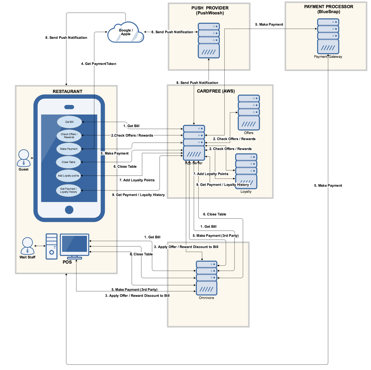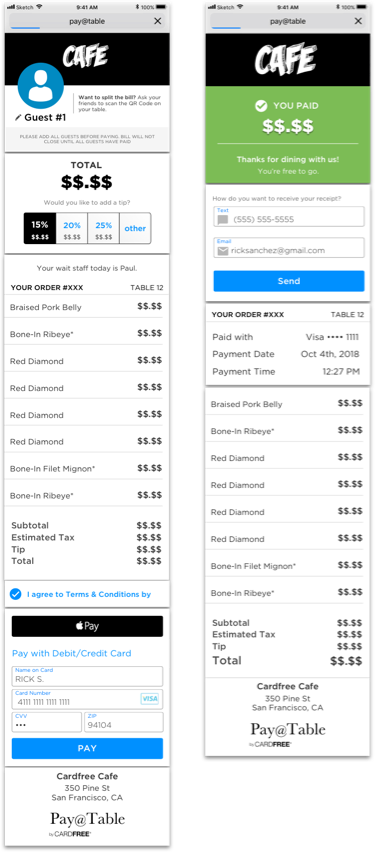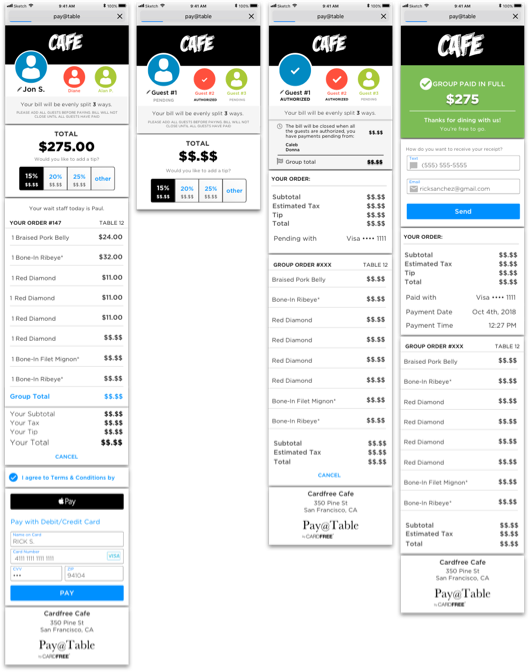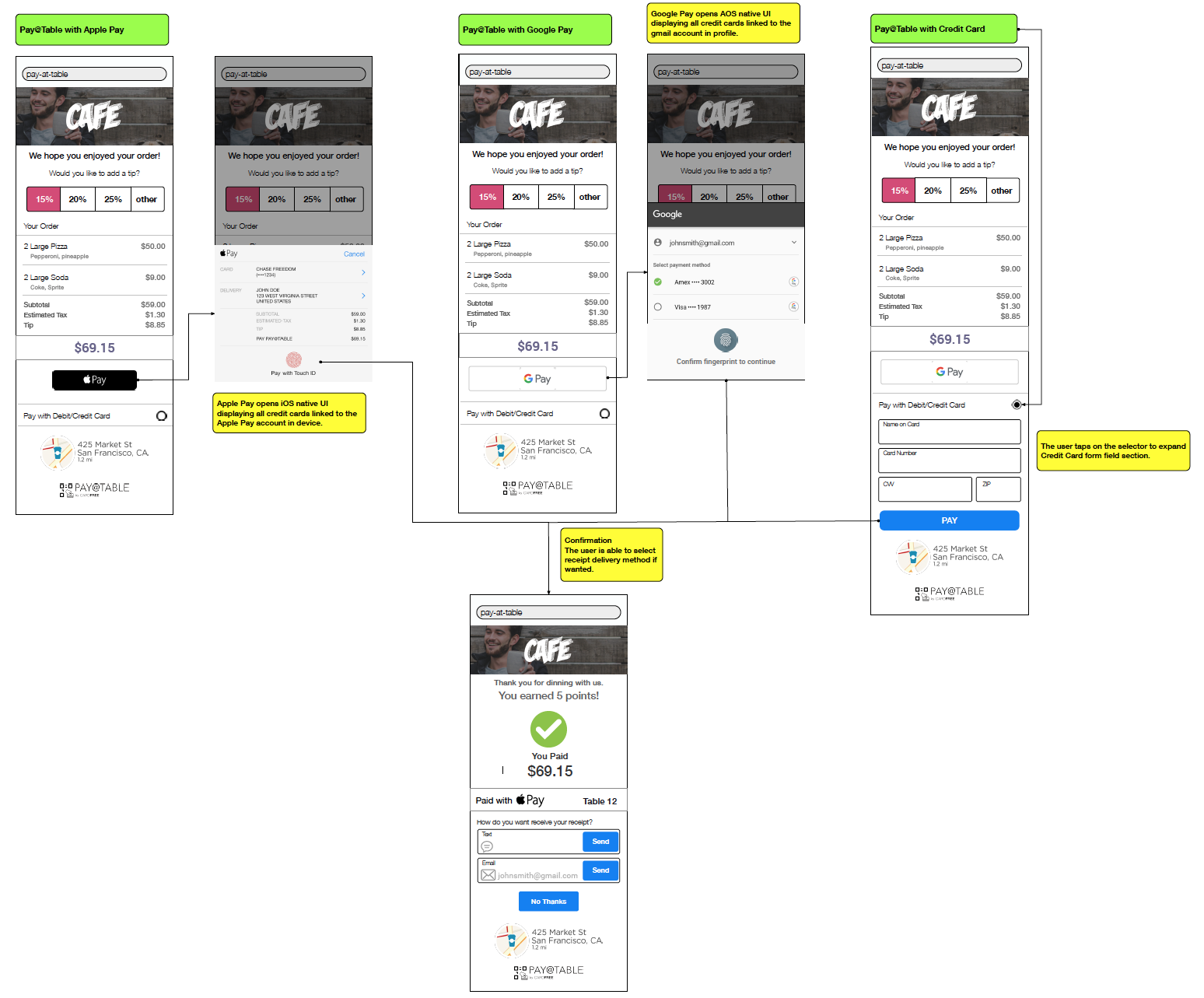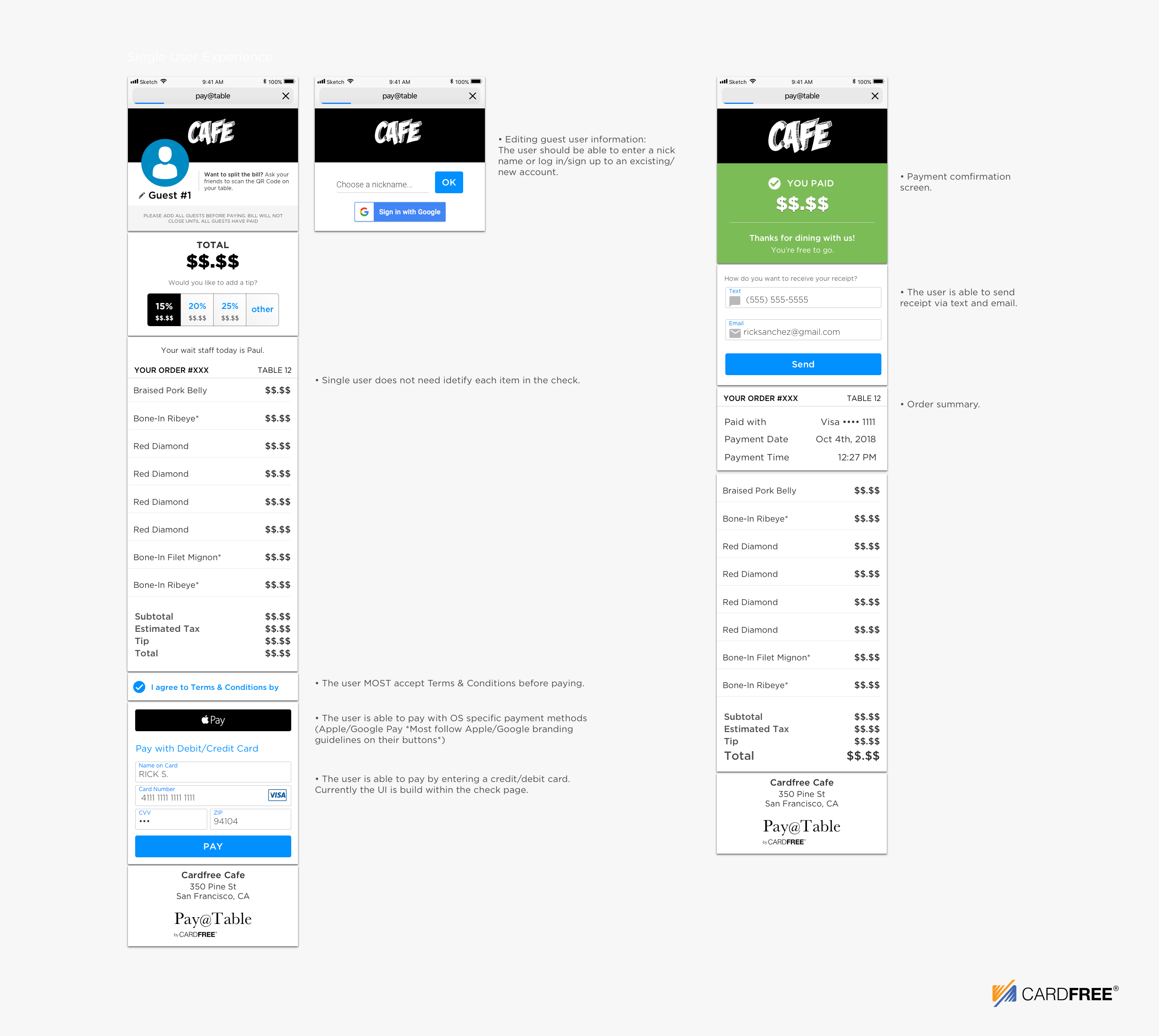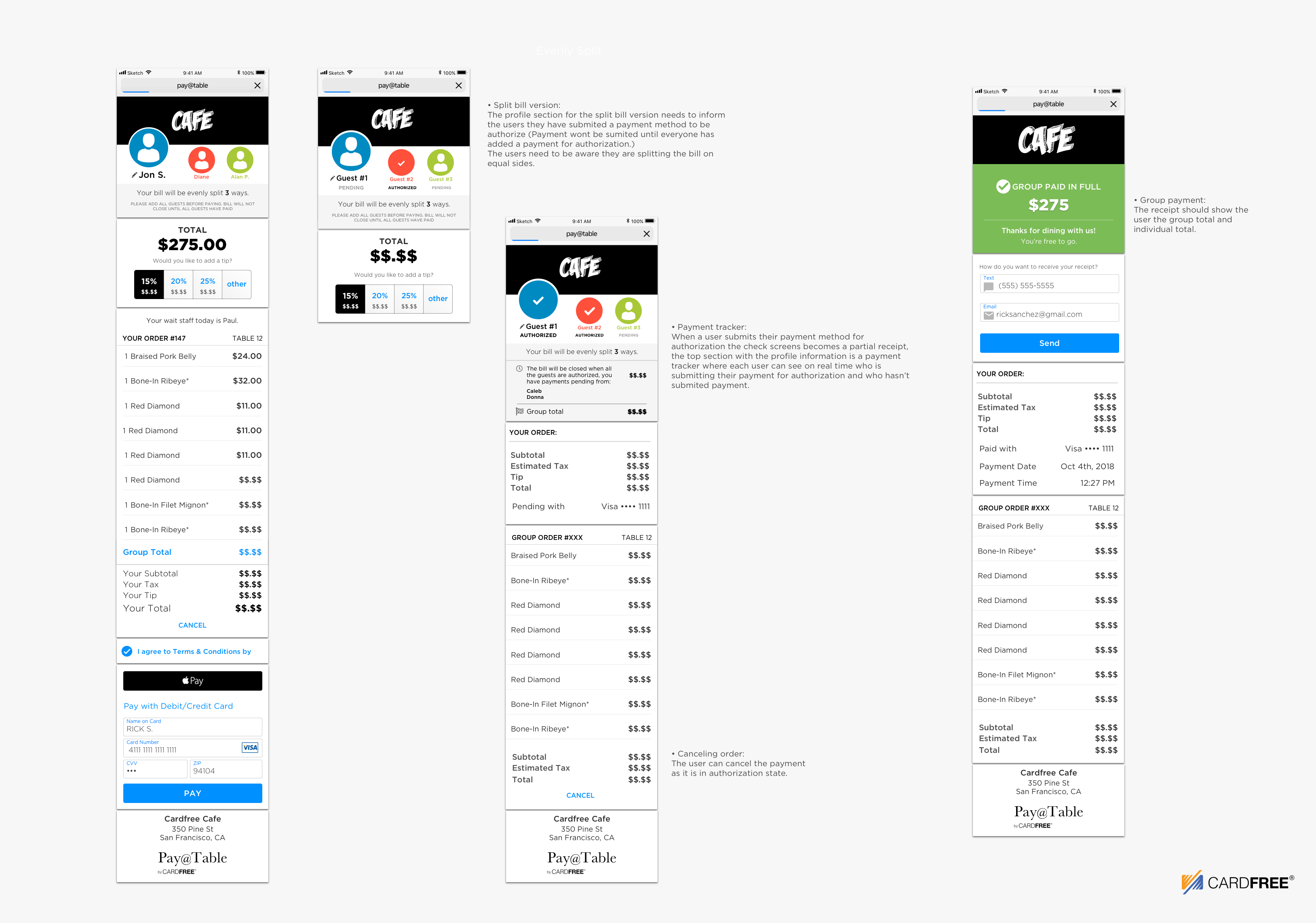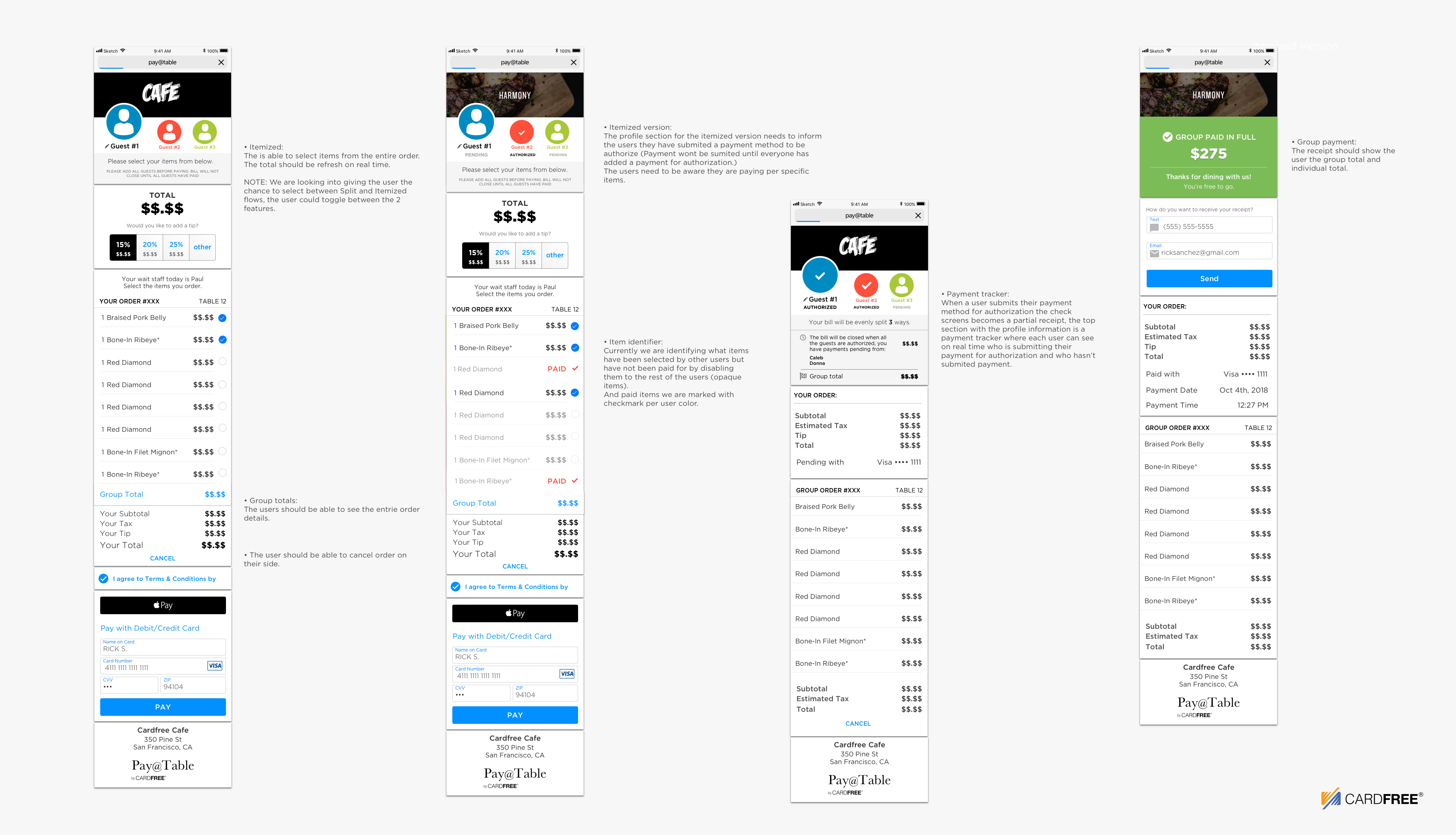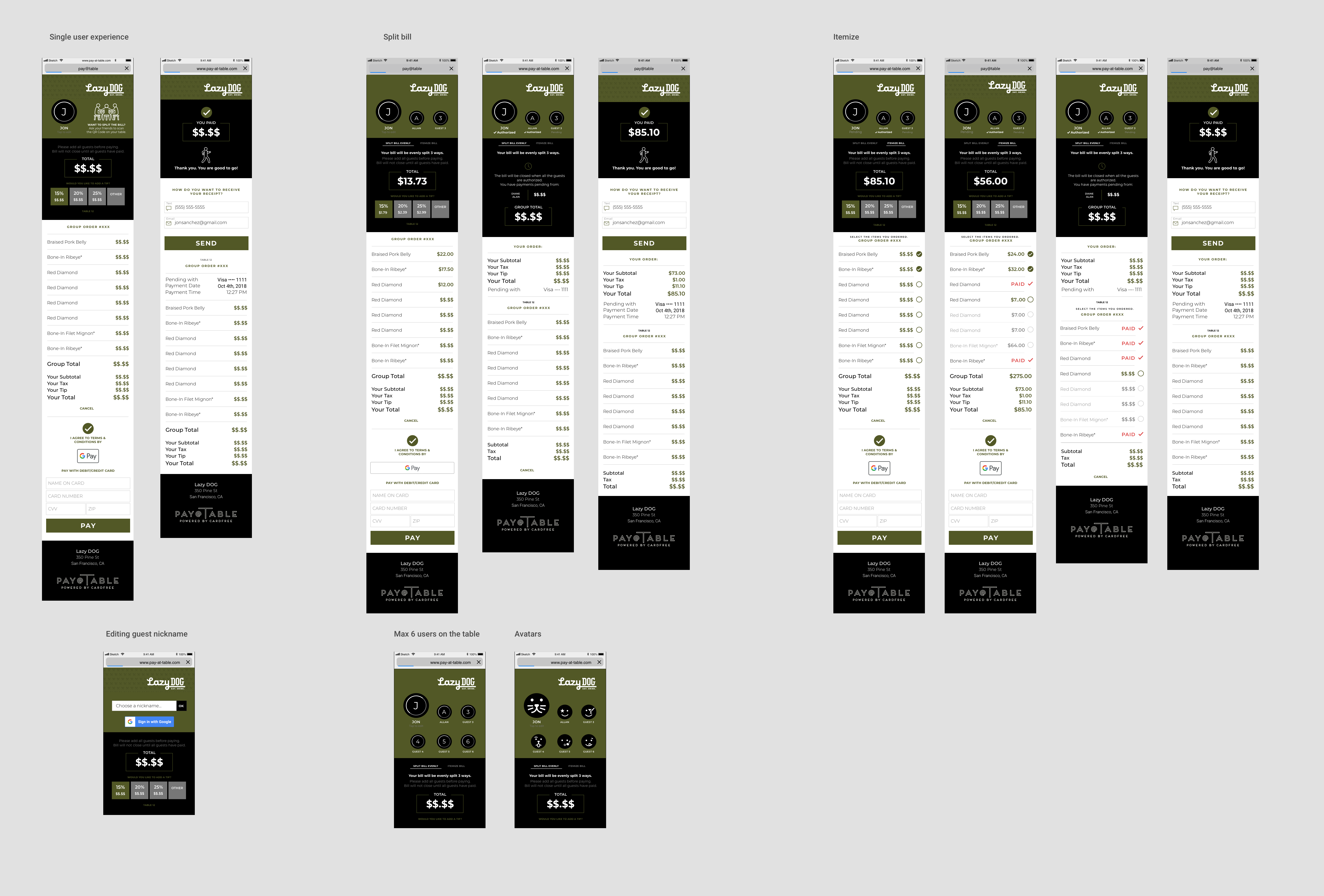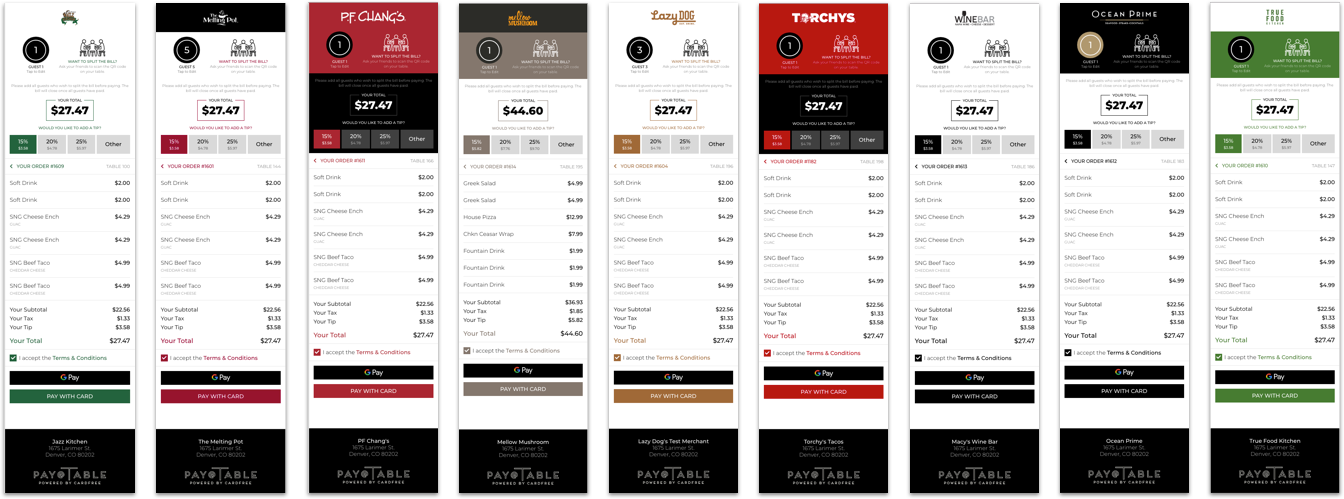WEB APP ARCHITECTURE
The following diagram outlines the mobile architecture
Get Bill
When the user scans the QR code on the tabte tent or the bill using the mobile app, the OR contains the following key information:
Merchant ID
Store ID
Table Number
This information directed to the app server for processing.
The request is then directed to OMNIVORE for that particular location ID. The POS Is contacted and the order information for that table is collected. It is then returned to the device for display to the guest.Check Offers and Rewards
The offers engine will be checked to see if there are any applicable offer available for the items they have selected or that particular store. If offers are available, the discount will be made displayed on the bill. The Rewards engine will be checked to see if the user has any available rewards they can redeem.Apply Offers and Reward Discount to Bill
Apply any offers or rewards as discounts to the blll on the POS.Got Payment Token
When the guest selects to pay using Google Pay (Android) or Apple Pay (iPhone) on the mobile app, the action triggers a Payment Data Request that is sent from the mobile app to Google and Apple. A token is sent in the response by Google and Apple. This is then used in the next make payment call.Make Payment
Once the token has been returned by Google Pay or Apple Pay, it is then sent to the cloud as a payment request. This is then subsequently directed from the app server to the payment processor for capture and settlement with the merchant. Once the payment has been successfulty processed, the payment information is sent to OMNIVORE then directed to the POS. The response is sent back to the mobile device for the next step in the process. The merchant can then see all payments made through their POS, this amount will then be seen as a settlement amount into the Payment Processor Merchant account.Close Table
Once the response has been received that the payment has been successfully processed, the table can then be closed. The request to close is sent to the POS via OMNIVORE. The success response is then sent back to the device.Add Loyalty Points
Loyalty points will be calculated based on dollar amount spent and frequency or visits and added to their accoont.Send Push Notification
Once the payment has been successfully processed and the table order closed, a success confirmation screen is presented to the guest. At this point a push notification is sent via our Push Notification service containing the following information:
Amount paid
Payment method used
Loyalty Points Earned
Reward earned (if applicable)
Thanking them for their visitGet Payment and Loyalty History
The guest can review their payment and loyalty history at any time:
Order number
Table Number
Date and time the order was closed
Wait staff name
Loyalty points earned
Order items
Discounts (Offers and Rewards)
Tip
Tax
Total
Payment method
